Sat 26 Jan 2008
Addenda to CRIME FICTION IV: D. R. Addleman, Marsha Alexander & others.
Posted by Steve under Authors , Covers , Crime Fiction IVNo Comments
I don’t suppose many of the authors in this blog entry are going to be familiar to many of you. They certainly weren’t to me, and there wasn’t much I was able to add by searching the Internet. These came from the top end of Part 24 of the online Addenda to the Revised Crime Fiction IV, speaking alphabetically again, all in the A’s, except where pen names came into play.
A number of the entries in Part 24 are for authors whose works were published by Major Books, a rather minor paperback company that started up in the late 1970s. They published a wide array of books, though, including fiction in all genres. Of interest to us is their crime fiction, of course, including a number of gothics. Most of their books are rather hard to find today. Getting their wares into sales venues was more than likely their greatest problem.
The added settings for the Major Books were sent to Al Hubin by Ken Johnson. Dan Roberts provided me with the cover images. Thanks to both!
ADDLEMAN, D. R.
A Contract on Stone. Major, pb, 1977. Add setting: Los Angeles. “He’d been set up, trained, and programmed; John didn’t know he was also the target!”
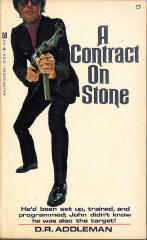
ALEXANDER, MARSHA. Pseudonym of Marsha Bourns, 1940- , q.v. Under this pen name, the author of romantic fiction, including four gothic or occult paperbacks cited in the (Revised) Crime Fiction IV. See below.
Birthmark of Fear. Major, pb, 1976. “There was something evil about the house on Scorpion Crest, but Thea tried to ignore it … until the ‘accidents’ began!”
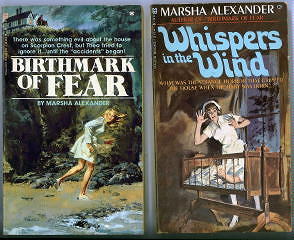
The Curtis Wives. Major, pb, 1979.
House of Shadows. Major, pb, 1977.
Whispers in the Wind. Major, pb, 1977. Add setting: California. “What was the strange horror that gripped the house when the baby was born…?”
AMES, EDNA. Pseudonym of Andrew J. Collins, q. v. Under this pen name, the author of one gothic romantic suspense novel included in the (Revised) Crime Fiction IV. See below.
The House of Secrets. Major, pb, 1976. Add setting: California. “Her brother’s mysterious death brought her back to the lonely beach house … back to the edge of terror!”
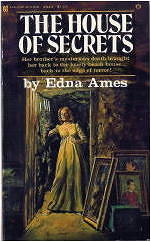
ANONYMOUS.
The Orphan Seamstress: A Narrative of Innocence, Guilt, Mystery, and Crime. New York: Burgess, hc, 72pp, 1850. Setting: New York, New Jersey, 1840s. Add: also contains ss: The Step-Mother [also no author stated]. The book is referred to several times in a doctoral thesis by Paul Joseph Erickson entitled Welcome to Sodom: The Cultural Work of City-Mystery Fiction in Antebellum America. Note: Shown below is a later edition published by Dick & Fitzgerald, no date given, but circa 1860s.
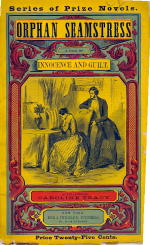
ANTHONY, JED. Pseudonym of Theodore D. Irwin, 1907-1999, q.v.
_Divorce Racket Girls. Design Publishing, pb, 1951. (Intimate Novels #6.) Previously published as Collusion (Godwin, 1932) as by Theodore D. Irwin. “A bombshell of a true story which blows the lid off a whole foul world and explosively discloses the debauches and treacheries of the divorce racket.”
BOURNS, MARSHA. 1940- . Pseudonym: Marsha Alexander, q.v.
COLLINS, ANDREW J. Pseudonym: Edna Ames, q.v.
IRWIN, THEODORE D. 1907-1999. Add pseudonym: Jed Anthony, q.v. Author of one work of fiction included in the (Revised) Crime Fiction IV, possibly true crime in novelized form. See below. This now constitutes the author’s complete entry.
Collusion. Godwin, hc, 1932. Add: also published (abridged) as: Divorce Racket Girls (Designs, 1951), as by Jed Anthony. Setting: New York City. Film: Majestic, 1934, as Unknown Blonde (scw: Leonard Field, David Silverstein; dir: Hobart Henley). Delete reference to film previously cited: Age of Indiscretion (MGM, 1935). The lurid cover below is of the Hillman paperback reprint, #18, 1949.
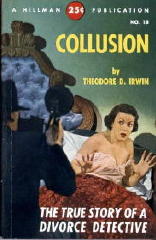



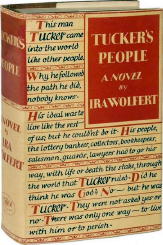
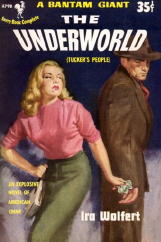








 When I was a kid and growing up, I read a lot of Robert Louis Stevenson’s work, as did a lot of kids my age, but I never read The Wrong Box, nor have I rectified that omission any time since. It was published in 1889, which would have made it a contemporary novel instead the period piece it obviously was in 1966.
When I was a kid and growing up, I read a lot of Robert Louis Stevenson’s work, as did a lot of kids my age, but I never read The Wrong Box, nor have I rectified that omission any time since. It was published in 1889, which would have made it a contemporary novel instead the period piece it obviously was in 1966. 
